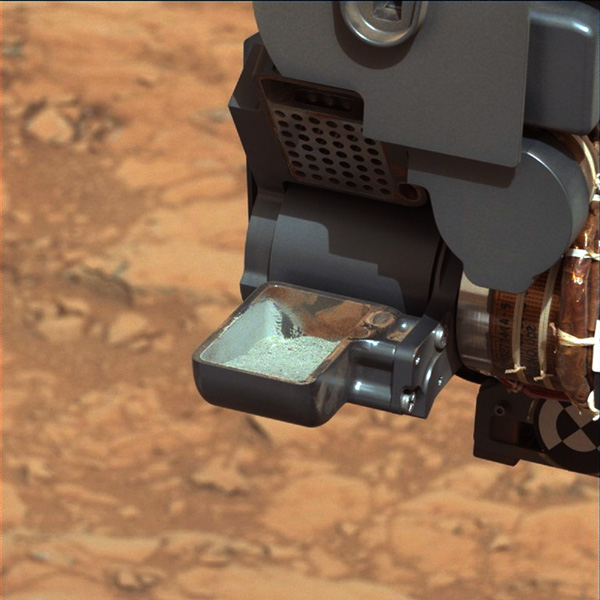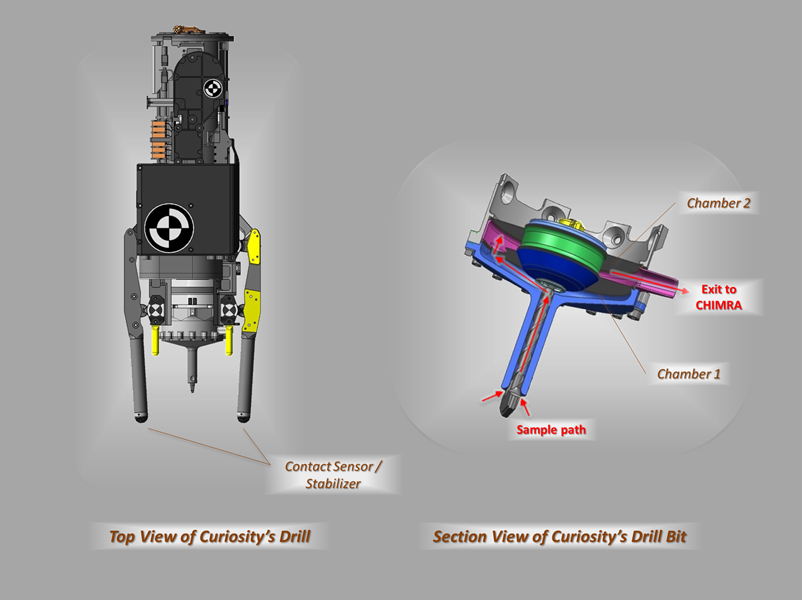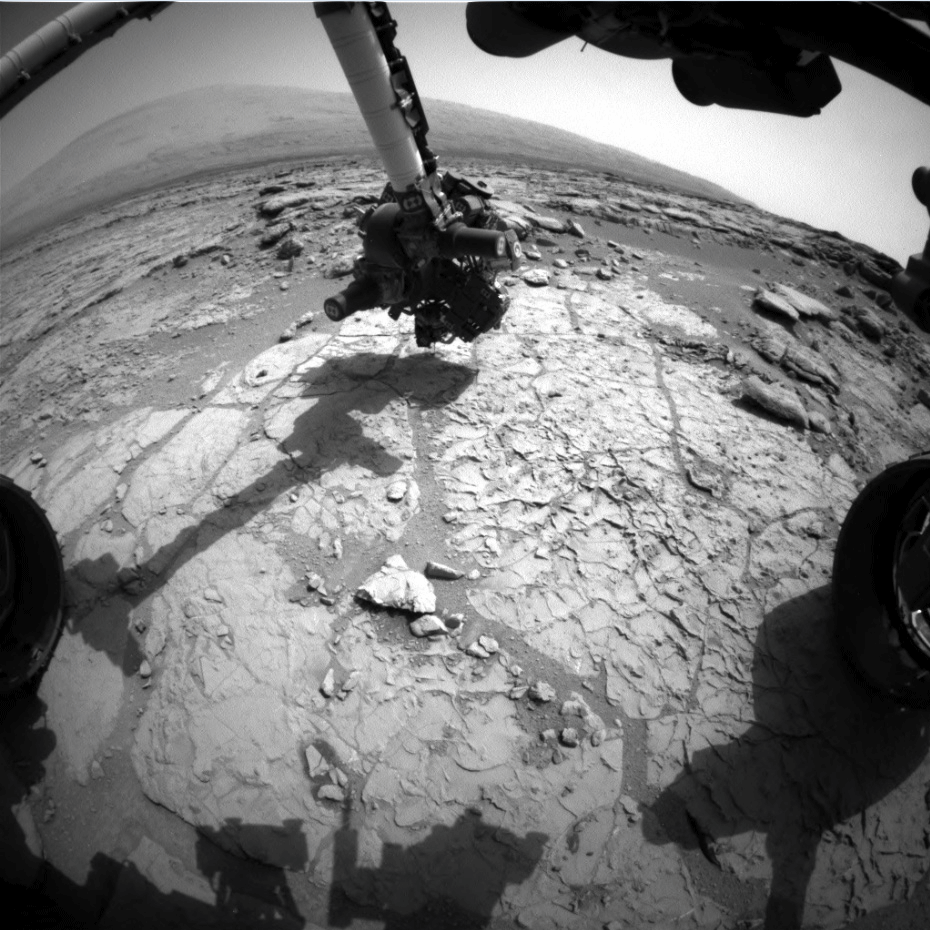Curiosity becomes first rover ever to drill Martian rock

Adding another milestone to its achievements, Curiosity has successfully drilled a Martian rock, thereby obtaining sample from its interior. Curiosity is the first rover ever to perform such drilling on a rock beyond Earth, NASA reported on February 20, 2013. Powdered rock-sample transferred to the open scoop was caught in pictures by the rover’s camera and sent to NASA’s Jet Propulsion Laboratory in Pasadena, California. Curiosity team will now analyze the sample using instruments inside the rover. JPL’s Scott McCloskey, drill systems engineer for Curiosity said,
“Seeing the powder from the drill in the scoop allows us to verify for the first time the drill collected a sample as it bore into the rock. Many of us have been working toward this day for years. Getting final confirmation of successful drilling is incredibly gratifying. For the sampling team, this is the equivalent of the landing team going crazy after the successful touchdown.”

Veiny sedimentary rock named “John Klein” after a Mars Science Laboratory deputy project manager who died in 2011 was chosen as drilling spot. This rock was selected for the first sample drilling because it may hold evidence of wet environmental conditions long ago. The rover’s laboratory analysis of the powder may provide information about those conditions.
The drill on Curiosity’s robotic arm took in the powder as it bored a 2.5-inch (6.4-centimeter) hole into the target on February 8. The rover team plans to have Curiosity sieve the sample and deliver portions of it to analytical instruments inside the rover. The scoop now holding the precious sample is part of Curiosity’s Collection and Handling for In-Situ Martian Rock Analysis (CHIMRA) device. During the next steps of processing, the powder will be enclosed inside CHIMRA and shaken once or twice over a sieve that screens out particles larger than 0.006 inch (150 microns) across. Small portions of the sieved sample later will be delivered through inlet ports on top of the rover deck into the Chemistry and Mineralogy (CheMin) instrument and Sample Analysis at Mars (SAM) instrument.


The 150-micron screen in one of the two test versions of CHIMRA became partially detached after extensive use, although it remained usable. For this reason, processing and delivery plan has been adjusted to reduce use of mechanical vibration. The team has added precautions for use of Curiosity’s sampling system while continuing to study the cause and ramifications of the separation.


In a press conference held afterward, rover’s team explained the drilling process and challenges faced by the rover. They pronounced sample of rocks as time capsule as they are digging up the unaffected interior to find out whether life have had ever existed on Mars – a fantastic capability that Curiosity drill gives JPL. The fact that sample doesn’t look rusty like rock’s surface suggests its interior didn’t go through the oxidization process which gave the Martian landscape the typical orange appearance. Joel Hurowitz, sampling team scientist said “it indicates certain oxidative process might have rusted the rocks into the orange color”. Scientists believe sample contains calcium sulphate, while hydration state remains unknown.
NASA’s Mars Science Laboratory Project is using the Curiosity rover with its 10 science instruments to investigate whether an area within Mars’ Gale Crater ever has offered an environment favorable for microbial life. JPL, a division of the California Institute of Technology, Pasadena, manages the project for NASA’s Science Mission Directorate in Washington.
Source: NASA/JPL
Featured image: NASA/JPL-Caltech/MSSS
First sample of powdered rock extracted by the rover’s drill. The image was taken after the sample was transferred from the drill to the rover’s scoop.

[…] NASA revealed results obtained from analysis of rock sample collected by Curiosity last month and reported ancient Mars could have had environment suitable for microbial life. Gray colored […]
[…] Curiosity is drilling Martian rocks, NASA’s Mars reconnaissance orbiter is continuing its observations to demystify the Red […]